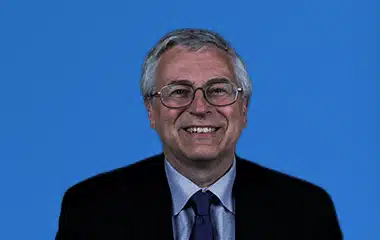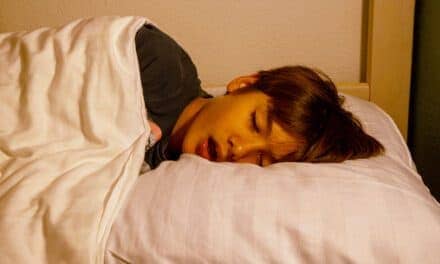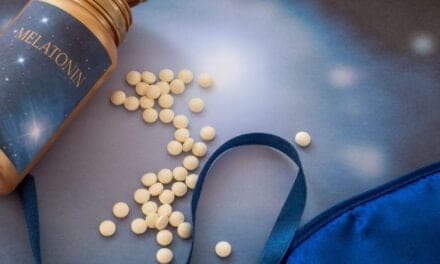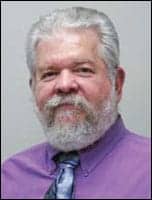A new position statement from the American Academy of Dental Sleep Medicine supports qualified dentists’ ability to order or administer HSTs. Not everyone agrees.
By C.A. Wolski
The American Academy of Dental Sleep Medicine (AADSM) recently made its position clear:
“[I]t is within the scope of practice for a qualified dentist, defined by the American Dental Association (ADA) as a dentist treating sleep-related breathing disorders who continually updates his or her knowledge and training of dental sleep medicine with related continuing education, to order or administer home sleep apnea tests (HSATs).”1
This position statement, which is diametrically opposed to the stance of the American Academy of Sleep Medicine (AASM), has already had a polarizing effect. But David Schwartz, DDS, president of the AADSM and statement co-author, isn’t swayed: Taking a strong stance was exactly the point.
“Effective positions are intended to be bold and often groundbreaking,” Schwartz says. “The number of dentists deemed qualified by the AADSM to treat patients diagnosed with sleep apnea and snoring has increased to more than 1,600. Correspondingly, the number of undiagnosed patients has almost doubled since the AASM commissioned the Frost & Sullivan report on the hidden health crisis of OSA [obstructive sleep apnea] in 2016.2 The AADSM believes qualified dentists working with licensed physicians can begin to chip away at this problem, helping patients while relieving some of the burden on sleep physicians and primary care physicians.”
But even with language in the statement indicating that dentists should work with physicians to score the tests and collaborate on care, the AASM does not agree that dentists should order home sleep apnea tests (also known simply as home sleep tests and “HST”s). The academy’s president, Kannan Ramar, MBBS, MD, says: “The AASM’s position statement on the clinical use of a home sleep apnea test3 and the Clinical Practice Guideline for Diagnostic Testing for Adult Obstructive Sleep Apnea4 clearly outline that a home sleep apnea test is used as a medical assessment, and its use must be preceded by a comprehensive sleep evaluation by a medical provider. This medical evaluation should include an assessment for chronic diseases and conditions that are associated with increased risk for obstructive sleep apnea, including hypertension, stroke, and congestive heart failure. An evaluation by a medical provider also is necessary to rule out conditions that place the patient at increased risk of central sleep apnea and other forms of non-obstructive sleep-disordered breathing. This medical evaluation is essential for identifying appropriate candidates for sleep testing and minimizing unnecessary tests.”
[RELATED: AASM and AMA Advocate to Block Dentists from Diagnosing OSA]
Pushback and questions aside, Schwartz notes the statement wasn’t created in a vacuum; it has been a hot topic at AADSM meetings for the past several years.
“Many of our members have strongly encouraged the adoption of such a policy as a result of these discussions, and the response since the publication of the position statement has been overwhelmingly positive,” he says, adding that a number of the sleep physicians he works with have been “overwhelmingly” supportive about the position statement.
The AADSM did not seek input from the AASM on the statement. “On an organizational level, the AADSM enjoys a positive working relationship with the AASM, but neither organization shares its respective policies directly with each other prior to adopting a position, nor should they,” Schwartz says. “We represent different constituents who work together for the welfare of our patients.”
New Wild, Wild West?
The AADSM position doesn’t cut sleep physicians out of the continuum of care, noting that data from home sleep tests should be “interpreted by a licensed medical provider for initial diagnosis and verification of treatment efficacy.”
But it’s the vagueness of “licensed medical provider” that strikes Lee A. Surkin, MD, FACC, FCCP, president of Empire Sleep Medicine in Bronx, NY, as problematic.
“It’s too vague. Why doesn’t it specify a board-certified sleep physician? Why not say ‘board-certified sleep physician’?” he asks rhetorically.
For his part, Schwartz doesn’t see a problem with the word choice.
“It seems obvious to me that we mean licensed physicians, but we recognize that in some states licensed advanced practice registered nurses and physician assistants can diagnose some medical conditions, including OSA,” Schwartz says. “The AADSM recognizes that these practitioners are a growing and an important part of our ever-expanding healthcare system and wanted to make sure they were included.”
Surkin also sees the term “qualified dentist” as vague and open to interpretation. “How do you define ‘qualified dentist’?” he asks.
By raising these questions, it could be assumed that Surkin is against dentists being involved in screening patients or offering care. But quite the opposite is true.
Surkin says he supports appropriately trained and experienced dental sleep medicine practitioners being involved in the screening and referral of patients for home sleep apnea testing. But when it comes to interpreting the studies and the expertise to recommend treatment, the board-certified sleep physician should be directly involved and collaborate with their dental sleep colleague. He sees no downside to the dentist ordering a home sleep test that is interpreted by a board-certified sleep physician who would then see the patient to discuss treatment options and refer back to the dentist those patients appropriate for oral appliance therapy.
In Surkin’s view, dentists need a higher level of training and didactic education than what is indicated in the position statement. There are many pathways for a dentist to become qualified, he notes, such as accredited, not-for-profit academic dental sleep organizations. For those dentists with longstanding sleep practices, they have become qualified through their years of practice experience along with continuing education.
New Haven, Conn-based Anthony Dioguardi, DMD, DABDSM, doesn’t quite go as far as Surkin, but echoes that there should be initial and ongoing training if dentists want to practice dental sleep medicine.
“I agree with the AASM/AADSM joint clinical guidelines that a dentist receive a minimum of 25 hours of recognized continuing education in dental sleep medicine from a non-profit organization or dental school every two years before they are considered qualified to practice dental sleep medicine,”5 he says, noting that the AADSM encourages all dentists providing oral appliance therapy to become “qualified dentists” and subsequently diplomates of the American Board of Dental Sleep Medicine.6
However, for Surkin, without continued training, he worries that this could be leading back to a “wild-wild west” mentality among some dentists who “are in [dental sleep medicine] for the wrong reason and take shortcuts to deliver a proven first-line treatment.” He predicts that the future may bring more strict requirements for “board certification” in dental sleep just as it did for sleep medicine.
Recommending diplomate training for a dentist newly entering the field of sleep would require the kind of dedication and time that would help avoid any shortcuts being taken and further strengthen the collaborative relationship with sleep physicians, Surkin says.
Schwartz was pragmatic when asked about the potential for non-qualified dentists—that is, those not up to date on sleep training or coursework—seeing the position statement as a green light to begin ordering home sleep tests for their patients.
“We have to keep in mind that in most states there is nothing prohibiting non-qualified dentists from ordering and administering HSATs,” Schwartz says. “This position statement clarifies that HSAT should only be ordered or administered after a screening process that identifies at-risk patients, that licensed medical providers should be diagnosing and verifying treatment efficacy, and that only qualified dentists with the appropriate knowledge and training should be ordering and administering HSAT. These safeguards ensure that trained dentists are communicating and collaborating with physician colleagues, while also providing a more streamlined and cost-effective model of care for patients. We feel that by stipulating these guidelines that it will in fact make more dentists accountable for being trained prior to utilizing this model.”
The position statement has sleep medicine professionals declaring where they draw the line, and surprisingly those boundaries are not necessarily based on credentials (physician versus dentist).
For example, while physician Surkin says he supports the position in its broadest sense, dentist Dioguardi shares clear objections, echoing physician and AASM head Ramar.
“An HST should be performed only after a consultation with a physician that is qualified to diagnose sleep disorders,” Dioguardi says. “It is certainly not appropriate for all sleep disorders, many of which share similar clinical presentations. Although HSTs are useful to confirm OSA in a patient with a high probability of that condition, they have a high percentage of false negatives and do not provide sufficiently reliable information to rule out the condition.
“As a participant in Yale’s sleep medicine fellowship program, I see the enormous amount of information that must be considered by sleep physicians. As dentists, we provide a dental solution to a medical problem, OSA. A physician that diagnoses OSA and prescribes treatment for a patient carefully considers all options, including CPAP, surgery, and dental appliances, and bases their recommendation on what they feel will be most appropriate for that patient. As dentists, I believe it is best that we are removed from that decision process and be very sensitive to the appearance of influencing a decision that may benefit us financially.”
Of course, whether you’re for or against the position, a recurring theme in the discussion is whether and how patients will be helped.
[RELATED: Incorporating Home Sleep Testing into Oral Appliance Therapy]
Considering the Patient
Len Liptak, CEO of oral appliance maker ProSomnus Sleep Technologies, echoing Schwartz, says there is a practical value to the AADSM’s official stance.
“The current gold standard for people with OSA is neither CPAP nor [oral appliance therapy], but rather no treatment or inadequate treatment. Eighty percent of people with OSA remain undiagnosed.7 Of the 20% who are diagnosed, over half are under-treated or nonadherent.8 This needs to change. The medical, societal, and economic consequences of OSA are simply too dear,” he says. “For these reasons I support the AADSM’s position statement that it is within the scope of practice for a qualified dentist to administer home sleep tests, provided the tests are interpreted by an appropriate medical provider.”
Because there aren’t enough sleep physicians relative to need, Liptak says dentists can help lessen the burden.
“According to the latest prevalence and diagnosis rate estimates, there are over 40 million people in the United States alone with undiagnosed OSA,”9 he says. “That translates to a burden rate of over 12,000 people with OSA per board-certified sleep physician.10 The average board-certified sleep physician diagnoses about 500 new patients with OSA per year,11 meaning it will take over 20 years to address the at-risk population.”
According to Liptak, if all dentists in the United States could be trained to administer home sleep tests, the burden rate would fall to a more manageable 216 people with OSA per dentist (the quotient of the number of undiagnosed patients and the total number of dentists12).
An underlying subtext in all of this is access to care. And an argument could be made that with the growing number of patients exhibiting apneic symptoms, broadening the number of medical professionals who can directly order a home sleep test is necessary.
“Access to care is two-fold. It is not just whether a patient has access to a specialist; it is also the amount of time it takes for a patient to be diagnosed and treated,” Schwartz says. “We must recognize that patients’ time, money, and convenience all play a role in their health care decisions. If a dentist has the training to screen for sleep apnea, works with a physician to identify mutually agreed upon criteria to determine if the patient is a candidate for HSAT, and can save some appointments and time from screening to treatment, we have also addressed access issues.”
This approach reflects Surkin’s belief in a collaborative model, but, again, he notes that it “needs to be outlined” in the AADSM’s position. Surkin says, “As a sleep physician, I have always sought out creating and building relationships with my dental sleep medicine colleagues, which is in the best interest of patient care, and I plan on continuing this.
“I’m pro-sleep dentistry. It just feels like the sleep physician is being tossed to the side [in the position statement], and I don’t know why.”
Dioguardi sees clear lanes. “Dental school and post-graduate training in dental sleep medicine provides us with the tools necessary to effectively and safely manage oral appliance therapy,” he says. “As we are not trained—or licensed—to perform medical diagnosis, physicians are not trained in occlusion, management of the TMJ complex, or assessing the stability of a dentition. The patient benefits most when we all do what we do best.”
Dioguardi also points out that access to care varies greatly in different parts of the country, so a one-size-fits-all national position might not make sense.
Dawn of a New Day?
The AADSM has begun a conversation that may extend beyond the future of dental sleep to the foundations of sleep medicine itself.
And it’s complicated to say the least. Reflecting on the question of whether dental education should include coursework along the lines of orthodontic or other specialized training, Dioguardi was supportive of the idea but also realistic about it as an immediate possibility.
“It would be wonderful if all dental schools incorporated enough dental sleep medicine so that all graduates would be as competent in oral appliance therapy as they were in restorative dentistry,” Dioguardi says. “Realistically, I’m skeptical if that is going to happen anytime soon. What I believe should be done is to provide enough training in dental sleep medicine so students can at least have an appreciation for complexities and science of the field so they can at least ‘know what they don’t know.’”
As for the potential negatives of the position statement, Schwartz doesn’t see any.
“We thought long and hard about this very point and are unable to identify any,” Schwartz says. “Facilitating the diagnosis of a medical disease by a licensed physician through a licensed and trained dentist has a positive impact on patient care. We have danced around the topic for way too long. The fact that dentists can order MRIs, radiographs, biopsies, complete blood counts, administer vaccines, etc, should serve as the basis for how we can help the overburdened health care system. Should a dentist and his collaborating physicians choose not to utilize this technology and model of care, then that is their choice and right.”
While researching this article L.A.-based contributor C.A. Wolski was struck by how much the sleep medicine landscape has changed since the first article he filed with Sleep Review in 2001.
References
- Schwartz D, Levine M, Adame M, et al. American Academy of Dental Sleep Medicine position on the scope of practice for dentists ordering or administering home sleep apnea tests. J Dent Sleep Med. 2020;7(4).
- Frost & Sullivan. Hidden health crisis costing America billions. 2016. Available at
https://aasm.org/resources/pdf/sleep-apnea-economic-crisis.pdf - Rosen IM, Kirsch DB, Carden KA, et al; American Academy of Sleep Medicine Board of Directors. Clinical use of a home sleep apnea test: an updated American Academy of Sleep Medicine position statement. J Clin Sleep Med. 2018 Dec 15;14(12):2075-7.
- Kapur VK, Auckley DH, Chowdhuri S, et al. Clinical practice guideline for diagnostic testing for adult obstructive sleep apnea: an American Academy of Sleep Medicine clinical practice guideline. J Clin Sleep Med. 2017 Mar 15;13(3):479-504.
- Ramar K, Dort LC, Katz SG, et al. Clinical practice guideline for the treatment of obstructive sleep apnea and snoring with oral appliance therapy: an update for 2015. J Clin Sleep Med. 2015 Jul 15;11(7):773-827.
- Addy N, Bennett K, Blanton A, et al. Policy statement on a dentist’s role in treating sleep-related breathing disorders. J Dent Sleep Med. 2018;5(1):25-6.
- Lee W, Nagubadi S, Kryger MH, Mokhlesi B. Epidemiology of obstructive sleep apnea: a population-based perspective. Expert Rev Respir Med. 2008 Jun 1;2(3):349-64.
- Catcheside PG. Predictors of continuous positive airway pressure adherence. F1000 Med Rep. 2010 Sep 23;2:70.
- Benjafield AV, Ayas NT, Eastwood PR, et al. Estimation of the global prevalence and burden of obstructive sleep apnoea: a literature-based analysis. Lancet Respir Med. 2019 Aug;7(8):687-98 + diagnosis rate. (composite statistic)
- Benjafield AV, Ayas NT, Eastwood PR, et al. Estimation of the global prevalence and burden of obstructive sleep apnoea: a literature-based analysis. Lancet Respir Med. 2019 Aug;7(8):687-98 + American Board of Sleep Medicine estimate. (composite statistic).
- Fletcher Spaght Inc. Market study: update on quantitative survey. 2020 May 11.
- Workforce. ADA. Available at www.ada.org/en/science-research/health-policy-institute/dental-statistics/workforce. 2019.
Illustration 161078867 © Hofred – Dreamstime.com






Thank goodness the AASM doesn’t control everything. Our lab has worked very closely with several referring DMD’s for years with very positive outcomes. We bring the DMD into the sleep lab and performed an HST on them prior to accepting referrals from them. Once they understood and were educated on the process, we see very few negative outcomes. If your DMD’s are taught how to stay in their lane of care, it is all good for both parties. When a direct referral comes over with a “red flag” or if the setup tech picks up on something from the patient when talking with them. We will not perform the HST and then move the patient for PSG. Since ALL of our insurance providers in our state require a HST performed first unless we have extensive clinical documentation, this saves the patients thousands of dollars and makes studies more available to those who need testing.